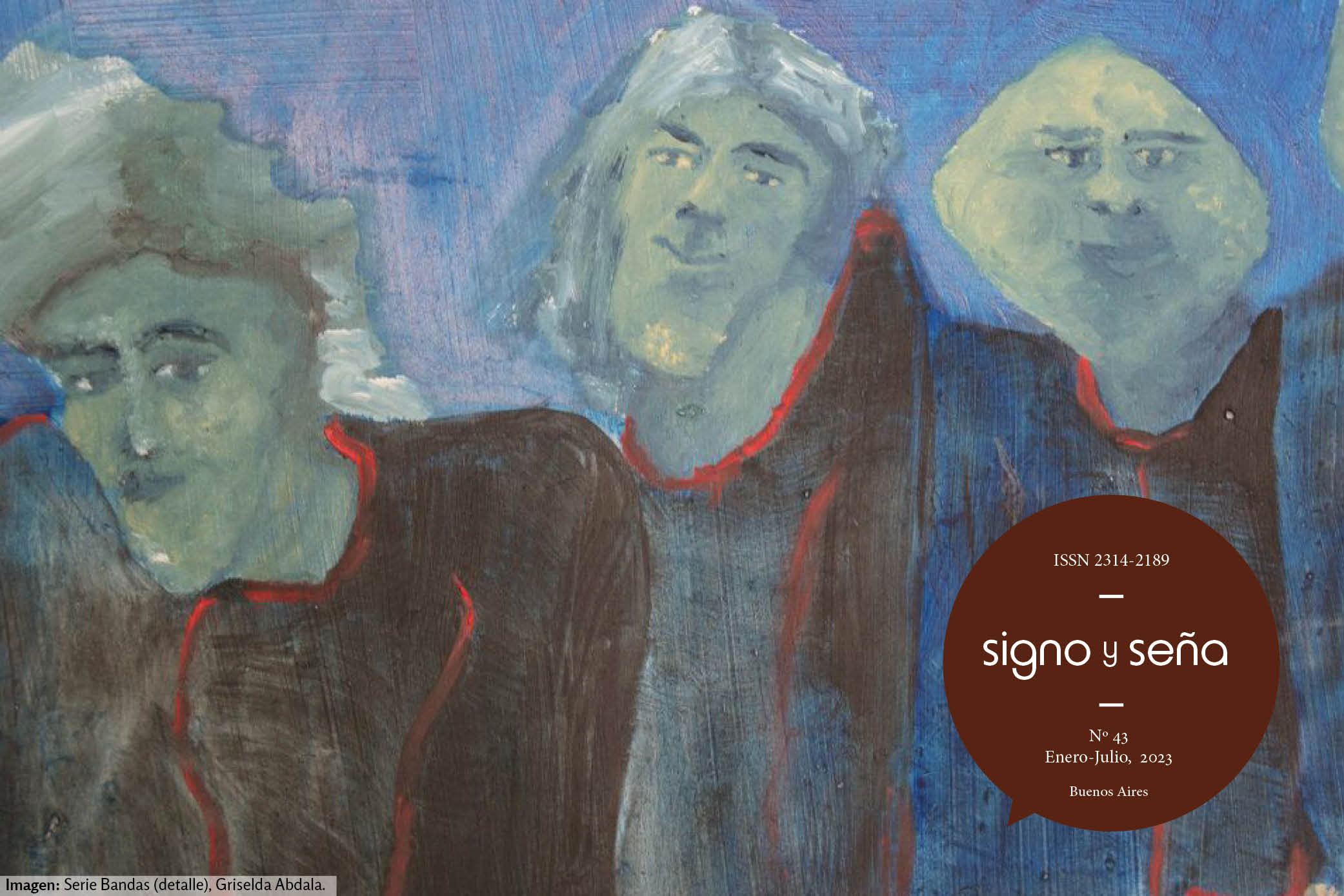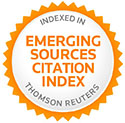Insertion and survival of the Piedmontese dialect in the “Argentine Gringa Pampa”: Publications and didactics of an immigration language
Abstract
As is well known, Italian, as the language of immigration, tended to merge partially with Spanish Rioplatense until it became one of the superstrata that had the greatest impact on this regional variety of Spanish. The Piemontese dialect, as a language, not just of simple immigrants but of settlers who settled in depopulated areas, has survived several decades and generations, since the arrival of the immigrants who brought it to Argentina. Its use in certain areas of the Pampa Gringa was common and it even became a valuable tool for work and commercial exchange, even for the inhabitants who were not of Piedmontese origin. This led to the circulation of grammars and dictionaries of the Piedmontese dialect within regional associations, Italian societies, libraries and parishes. Our contribution, which became the hypothesis of this work, is the confirmation of the existence of material of incalculable grammaticographic value, arising from different actors of the Argentine Pampa Gringa, material that helps to consolidate the dialectal variety of Piedmontese in Argentina as a linguistic form with its own characteristics. It aims at the search, description and classification of texts, in the Piedmontese dialect, present in the libraries of the Piedmontese regional associations of Argentina or that are currently used during the dictation of Piedmontese classes in our country.Downloads
References
Antón, Eneko, Guillaume Thierry y Jon Andoni Duñabeitia. 2015. “Mixing languages during Learning? Testing the one subject-one language rule”. PLoS ONE 10.6: e0130069.
Auer, Peter. 1999. “The pragmatics of code-switching: a sequential approach”. En Lesley Milroy y Pieter Muysken (eds.), One speaker, two languages: Cross-disciplinary perspectives on code-switching, 115-135. Cambridge: Cambridge University Press.
Berruto, Gaetano. 1998. Fondamenti di sociolinguistica. Roma: Laterza.
Berruto, Gaetano y Massimo Cerruti. 2014. Manuale di sociolinguistica. Torino: UTET.
Bialystok, Ellen, Fergus I.M. Craik, y Gigi Luk. 2012. “Bilingualism: Consequences for mind and brain”. Trends in Cognitive Sciences 16.4: 240-250.
Brarda, Norma. 2016. Gramática de la Lengua piamontesa: Morfología. Sintaxis. Fonología. Formación de las palabras. Santa Fe: Asociación Cultural de Rafaela.
Brarda, Norma. 2021. “La lenga piemonteisa”. I soma sí 1.1.
Brero, Camillo y Remo Bertodatti. 1988. Grammatica della lingua piemontese: Parola, vita, letteratura. Torino: Edizione “Piemont/Europa”.
Chambers, Jack. 2003. “Sociolinguistics of immigration”. En David Britain y Jenny Cheshire (eds.), Social dialectology: In honour of Peter Trudgill, 97-113. Amsterdam, Philadelphia: John Benjamins.
Comba, Ronal. 2020. Ròba piemontèisa: Cosas piamontesas o piemontesas. Villa Carlos Paz: Quo vadis Ediciones.
Cortelazzo, Manlio, Carla Marcato, Nicola De Blasi y Gianrenzo P. Clivo, eds. 2002. I dialetti italiani: Storia, struttura e uso. Torino. UTET.
Cozzani de Palmada, María Rosa. 1997. Sociedades y espacios de migración: Los italianos en la Argentina y en Mendoza. Mendoza: Ediunc.
Dehaene, Stanislas. 1999. “Fitting two languages into one brain”. Brain 122: 2207-2208.
Devoto, Fernando. 1993. “En torno a la historiográfica reciente sobre las migraciones a Latinoamérica”. Estudios Migratorios Latinoamericanos 25.
Devoto, Fernando. 2002. Nacionalismo, fascismo y tradicionalismo en la Argentina moderna. Buenos Aires: Siglo Veintiuno.
Di Sant’Albino, Vittorio. 1859. Gran dizionario piemontese-italiano. Torino: Societá unione tipografico-editrice.
Di Tullio, Angela. 2010. Políticas lingüísticas e inmigración: El caso argentino. Buenos Aires: Eudeba.
Dumont, Gerard F. 1999. Les racines de l’identité européenne. Paris: Economica.
Duñabeitia, Jon Andoni y Manuel Carreiras. 2015. “The bilingual advantage: acta est fabula?”. Cortex 73: 371-372.
Franceschini, Rita. 1996. “Un modello per lo spazio variazionale dell’italiano all’estero”. Italian Culture 14: 311-336.
Gallo, Ezequiel. 2004 [1983]. La pampa gringa: La colonización agrícola en Santa Fe 1870-1895. Buenos Aires: Edhasa.
Giolitto, Marco. 2016. Palabras de gringos: Usos del piamontés en la vida cotidiana de los habitantes de la Pampa Gringa. Rosario: Prohistoria Ediciones.
Goria, Eugenio. 2015. “Il piemontese di Argentina: Considerazioni generali”. Rivista Italiana di Dialettologia, Lingue Dialetti e Società 39: 127-158.
Goria, Eugenio. 2021. “Il piemontese in Argentina: Preliminari per un’indagine sociolinguistica”. En Simone Pisano y Gabriele Iannàccaro (eds.), Intrecci di parole: Esperienze di pianificazione del plurilinguismo, in Europa e fuori dell’Europa. Alessandria: Edizioni dell’Orso.
Griffin, Zenzi M. y Victor S. Ferreira. 2006. “Properties of spoken language production”. En Matthew J. Traxler y Morton A. Gernsbacher (eds.), Handbook of. psycholinguistics, 21-59. 2a. ed. New York: Academic Press.
Klich, Ignacio y Mario Rapaport, coord. 1997. Discriminación y racismo en América latina, Buenos Aires: Grupo Editor Latinoamericano.
Kockelman, Paul. 2012. Agent, person, subject, self: A Theory of ontology interaction and infrastructure. Oxford: Oxford University Press.
Levi, Attilio. 1927. Dizionario etimológico del dialetto piemontese. Torino: G. B. Paravia & C.
Lombardini, Hugo. 2017. Gramáticas de español para italófonos (1876-1900). Bologna: CLUEB.
Moreno Fernández, Francisco. 1998. Principios de sociolingüística y sociología del lenguaje. Barcelona: Ariel.
Milroy, Lesley y Pieter Muysken, eds. 1999. One speaker, two languages. Cambridge: University Press.
Pipino, Maurizio. 1923 [1783]. Gramatica piemontese. Torino: Stamperia Reale.
Rapp, Brenda y Matthew Goldrick. 2006. “Speaking words: Contributions of cognitive neuropsychological research”. Cognitive Neuropsychology 23.1: 39-73.
Rebuffo, Luis. 1966. Diccionario piamontés-castellano y castellano-piamontés. Rosario: Asociación “Familia Piamontesa”.
Rossetto, Enrique. 2015. Inmigración europea en Argentina: Estudios de la inmigración piamontesa I. Córdoba: CIFAL.
Rumbaut, Rubén y Alejandro Portes. 2010. Legados: La historia de la segunda generación inmigrante. Lima: Hipatía.
Sayad, Abdelmalek. 1991. L’immigration ou les paradoxes de l’altérité. Bruxelles: Éditions De Boek-Wesmael.
Zlatev, Jordan, Timothy P. Racine, Chris Sinha y Esa Itkonen. 2008. The shared mind: Perspectives on intersubjectivity. Amsterdam, Philadelphia: John Benjamins.
- Authors keep the copyright and give the journal the right of the first publication, with the work registered with the Creative Commons Attribution-ShareAlike 4.0 International License, which allows third parties to use what is published whenever they mention the authorship of the work and the first publication in this magazine.
- Authors can make other independent and additional contractual agreements for the non-exclusive distribution of the article published in this journal (eg, include it in an institutional repository or publish it in a book) as long as they clearly indicate that the work It was published for the first time in this magazine.
- Authors are allowed and recommended to publish their work on the Internet (for example on institutional or personal pages).

















